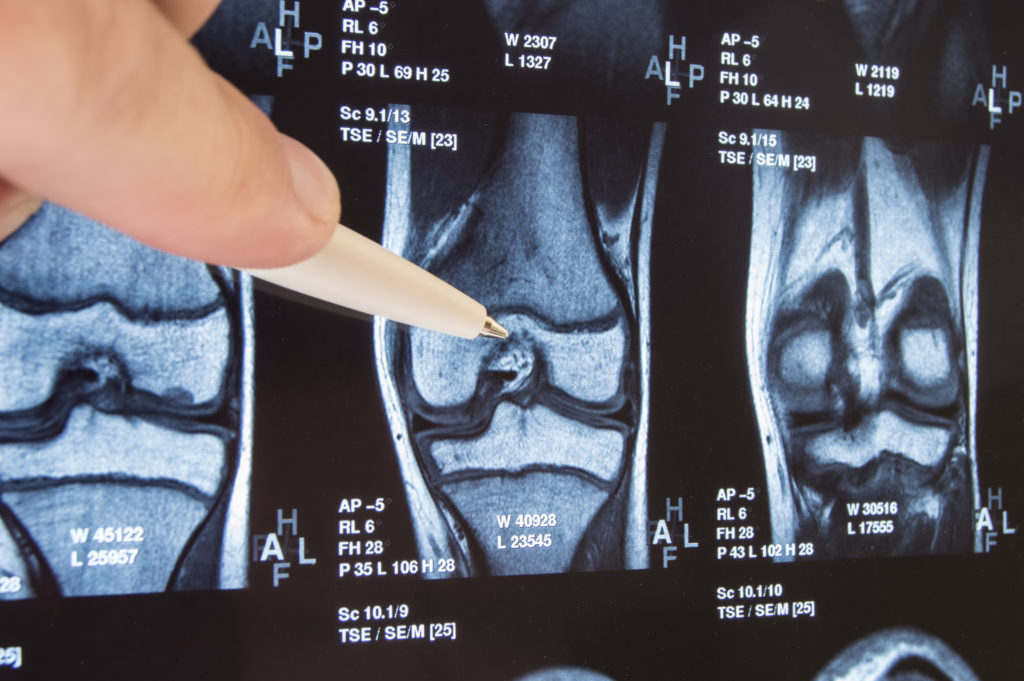Osgood-Schlatter disease is a common cause of knee pain in adolescents. It occurs in the front of the knee, just below the kneecap (patella), and involves inflammation of a growth plate of the shin bone (tibia).
Anatomy
The bones of growing adolescents possess growth plates, which are areas of cartilage located near the ends of bones. When a human is fully grown, the growth plates harden into solid bone. Some growth plates serve as attachment sites for tendons, the strong tissues that connect muscles to bones.
A bony bump called the tibial tubercle covers the growth plate at the end of the tibia. The group of muscles in the front of the thigh (called the quadriceps) attaches to the tibial tubercle.
When a child is active, the quadriceps muscles pull on the patellar tendon, which in turn, pulls on the tibial tubercle. In some children, this repetitive traction on the tubercle leads to inflammation of the growth plate. The bump of the tibial tubercle may become very noticeable.
Cause
Osgood-Schlatter disease most often occurs during growth spurts, when bones, muscles, tendons and other structures are quickly developing. Because physical activity puts additional stress on bones and muscles, children who participate in athletics, particularly running and jumping sports, are at an increased risk for this condition. However, less active adolescents may also experience this problem.
Symptoms
- Pain caused by jumping or running
- Knee pain and tenderness
- Swelling
- Tight muscles in the front or back of the thigh
Physician examination
To determine whether you are experiencing Osgood-Schlatter disease, your physician will ask you for your child’s complete medical history, have your child describe their symptoms and how the injury occurred, and conduct a physical examination. An X-ray may be necessary to rule out other problems.
Make an appointment with a knee specialist at OrthoIndy
What is the best treatment for Osgood Schlatter disease?
In most cases the disease will improve with:
- Rest
- Limited activity
- Over-the-counter medication
- Stretching and strengthening exercises
Symptoms typically go away when a child completes the adolescent growth spurt, around age 14 for girls and age 16 for boys. Therefore, surgery is rarely recommended.
Learn more about having knee pain treated at OrthoIndy.
Schedule an appointment
Your well-being is important to us. Click the button below or call us to schedule an appointment with one of our orthopedic specialists. If your injury or condition is recent, you can walk right into one of our OrthoIndy Urgent Care locations for immediate care. For rehabilitation and physical therapy, no referral is needed to see one of our physical therapists.





